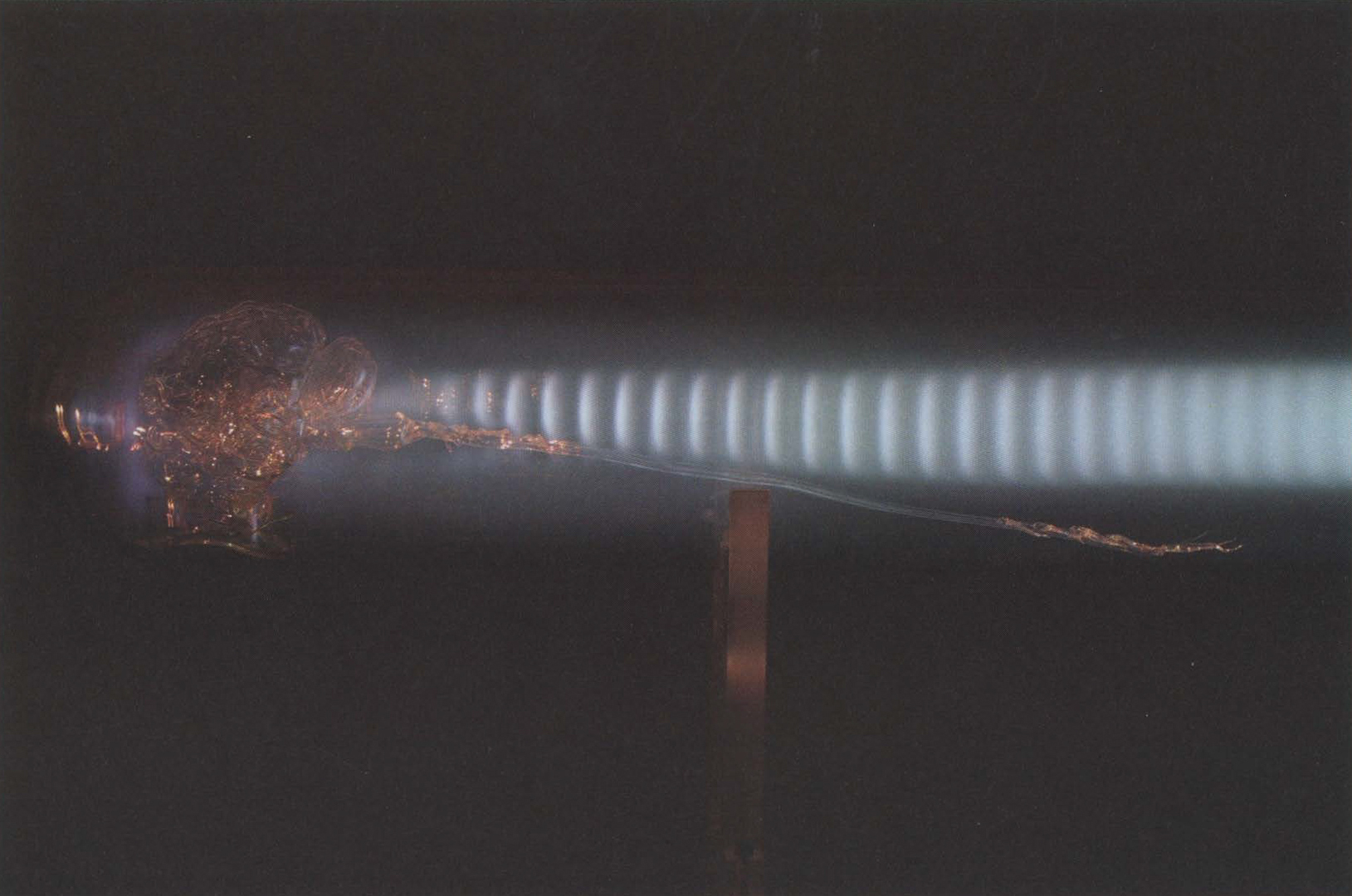Catherine Richards: I was scared to death/I could have died of joy
Artist(s):
Title:
- I was scared to death/I could have died of joy
Exhibition:
Creation Year:
- 2007
Category:
Artist Statement:
New media is an ubiquitous electromagnetic system, wired
and wireless. We are always plugged into an increasingly
dense sea of signals. We now have no choice. Global connection means that this is as true in urban centers as it is for “remote” margins. What is it like to plug in our own body? In a darkened room are two stainless-steel tables, human scale. On the tables are objects that appear to be specimens: two glass brains in glass tubes. These are not inert. The spectator is sensed, the brains excite. Electrons become agitated, and plasma gases flare up in the tubes. The spectator can touch a tube, and the plasma’s energy stream follows the hand, straining for contact. Finally, the light begins a beat, as if signaling. The empty space between the tubes becomes highly charged as the signals compete for attention. The electronic pulse is based on patterns claimed to be the timing of neurons firing in certain areas of the human brain. The firing patterns used here correspond to states of haunting or abject fear for one tube and benign
enlightenment or rapture for the other. These emotions can be
understood as two sides of the same coin, feeling inhabited
by something else. The brain (the body’s computer!) may be
affected quite directly, through a process called “entraining.” It was the slippage between electromagnetics, physiology, and emotion that fascinated me. Emotions can be “seen” in the patterns of the brain’s firing. I was scared to death / I could have died of joy is a simultaneous seduction between two extremes: rapture and fear.
Technical Information:
When spectators approach the glass tubes on the tables,
they trigger a sensor that fires up custom-designed, high voltage circuits. High voltages excite electrodes. These in turn excite the plasma gases captured in evacuated glass
tubes (5-inch diameter x 4 feet long) and create phosphorescence. When the glass tubes are touched, the trapped plasma is attracted to the hands, which act as a capacitive path to ground as bodies become part of the plasma-path circuit. The phosphorescent gases begin to pulse. A computer board controls the timing of the rhythm. The pulsating patterns are based on scientific research conducted on the brain’s electromagnetic behavior.





